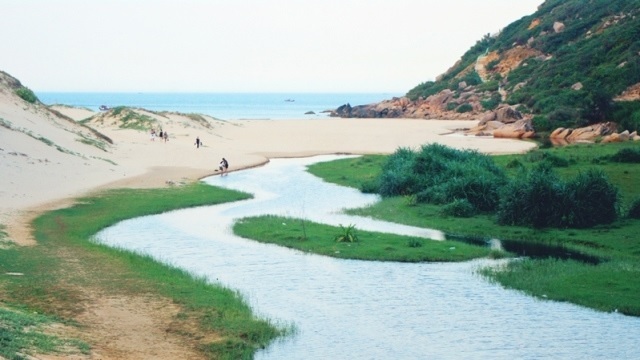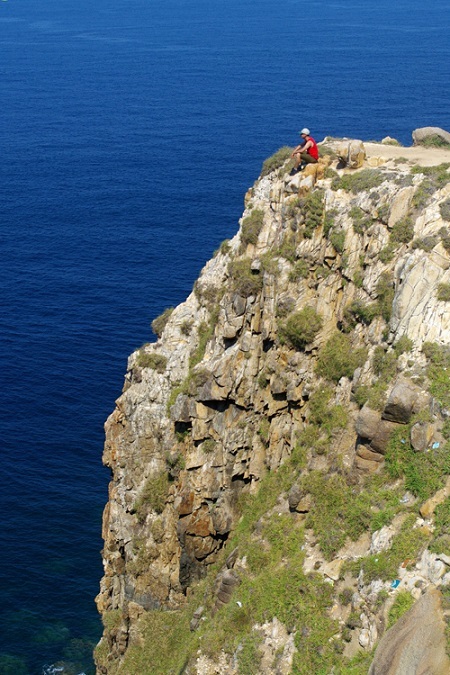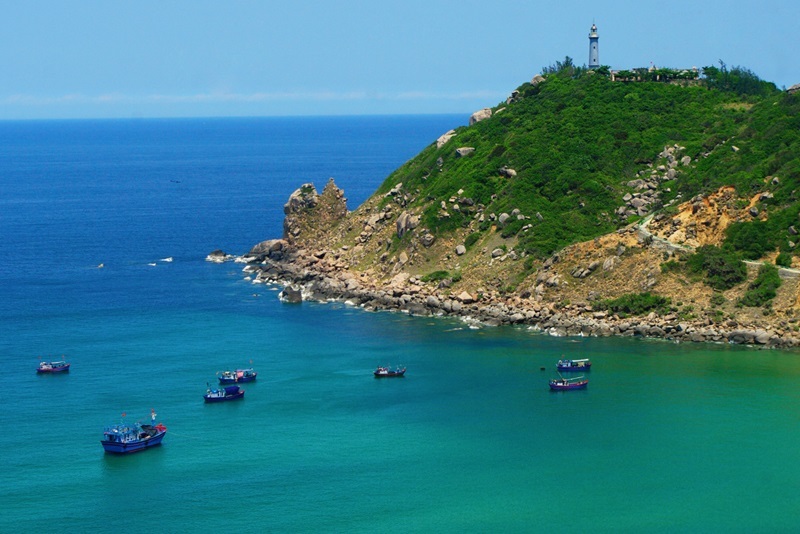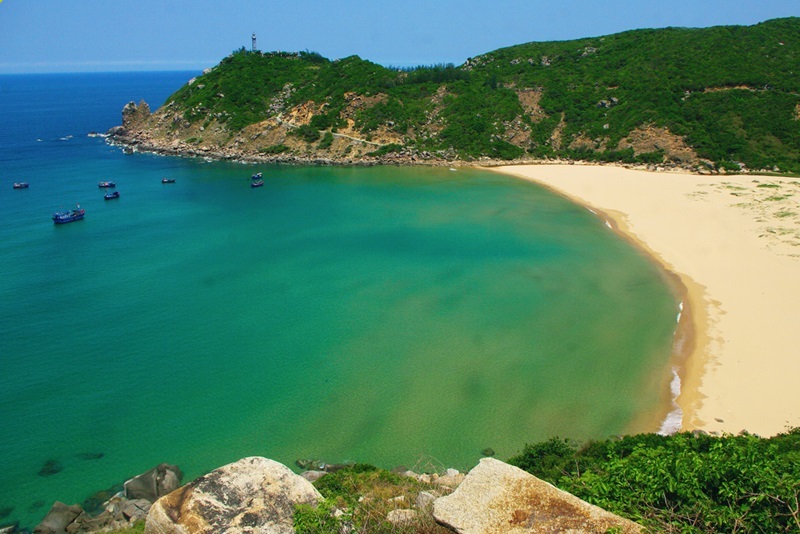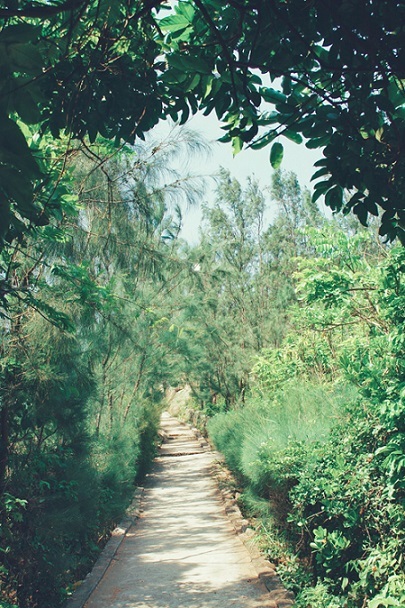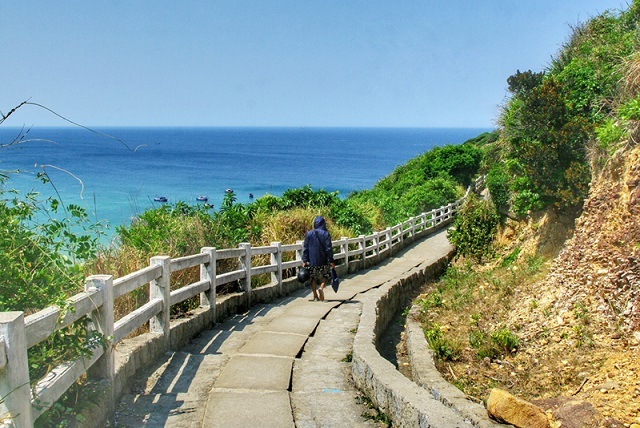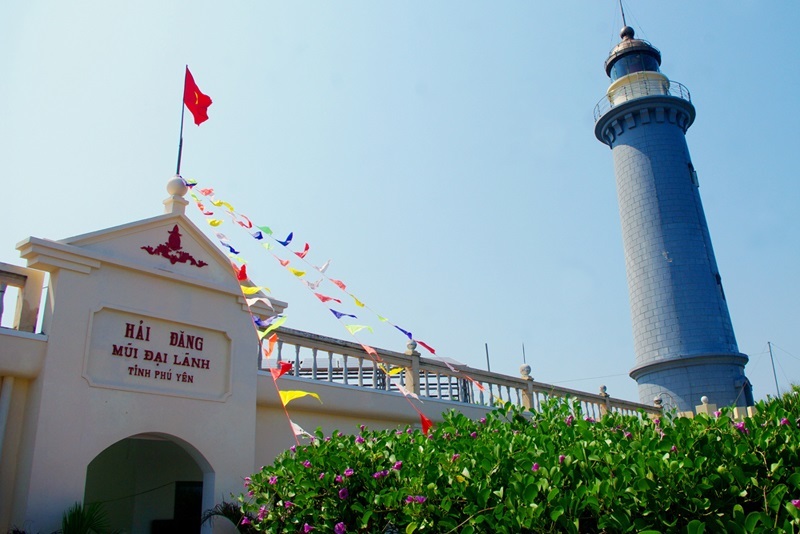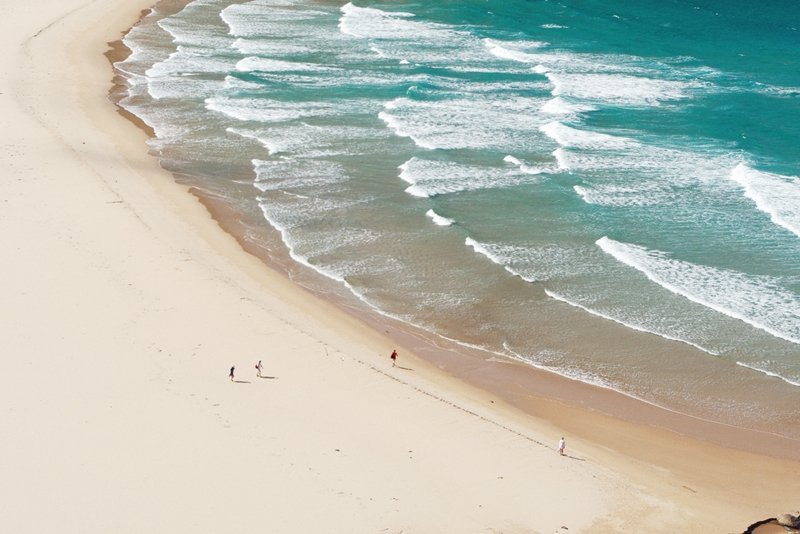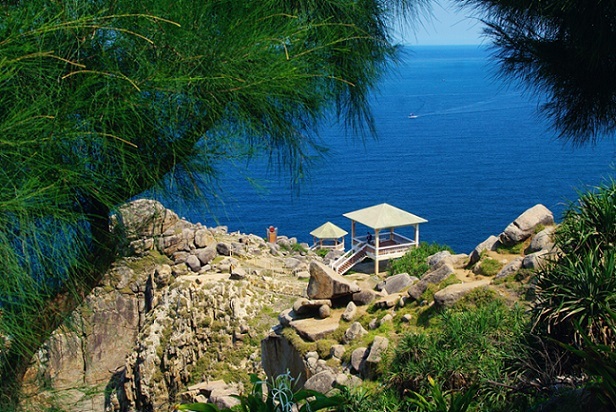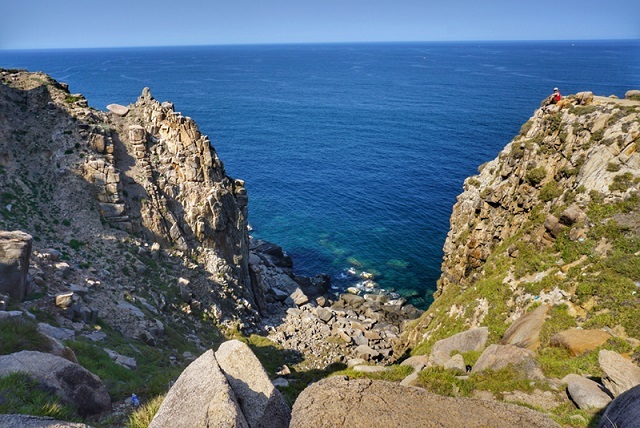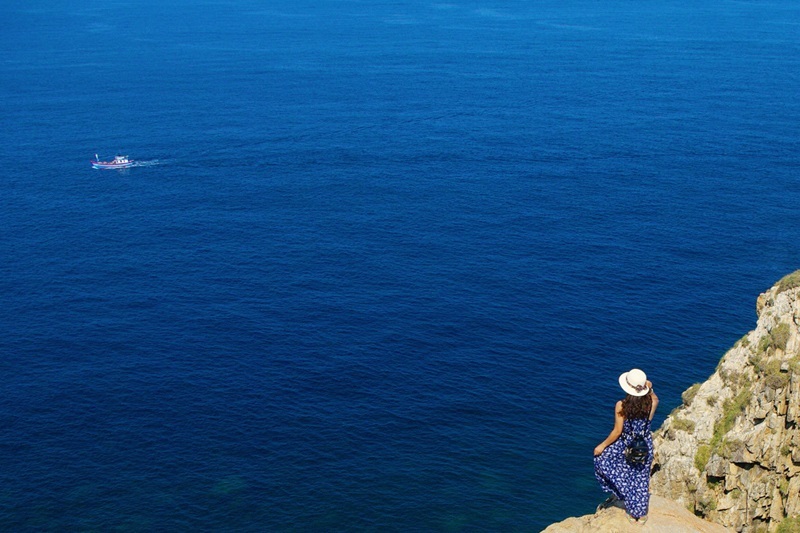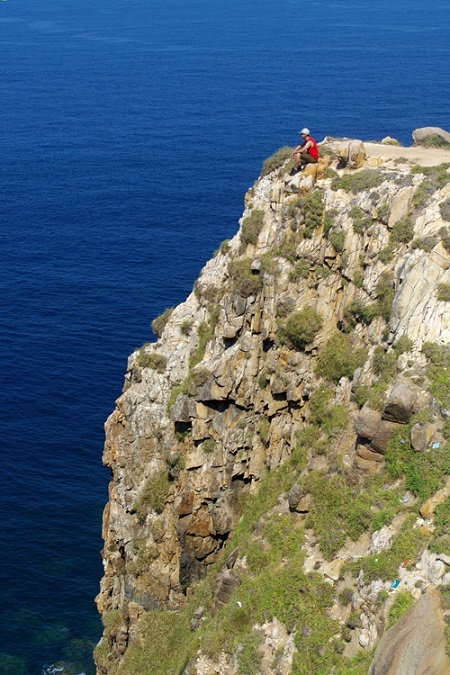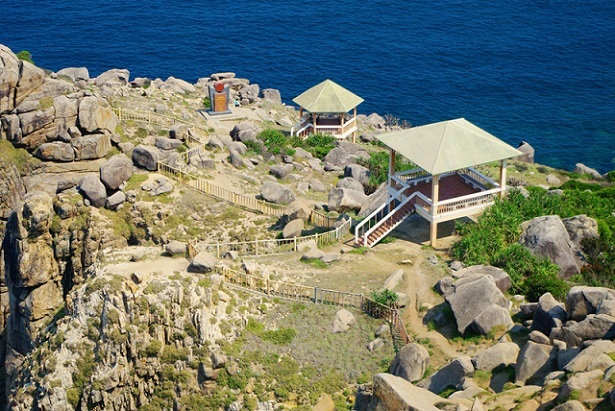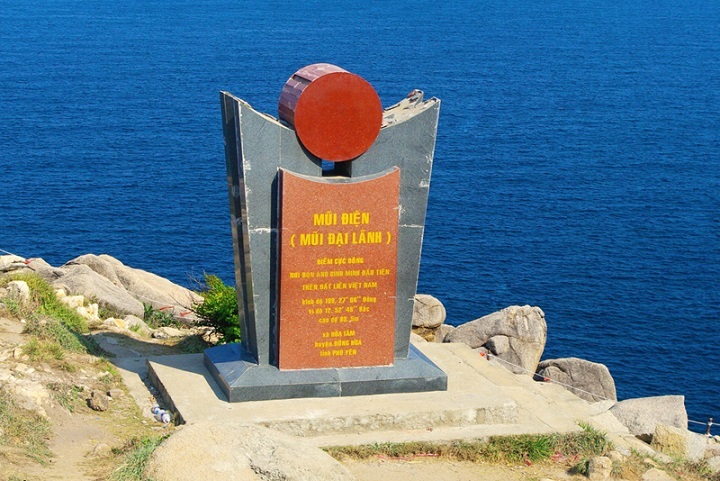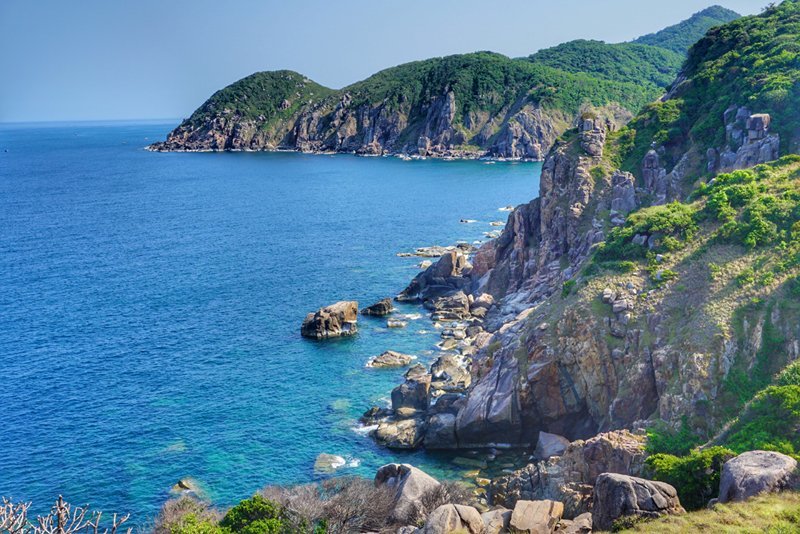In Phu Yen’s tourist map, Mui Dien (Dien Cape) is pinned as one of the most beautiful, spectacular and iconic sites of the city.
|
Standing at the top of Dai Lanh light house, one can see a little further to find the jade and crystalline Bai Mon beach on the right side, with a long beach and soft white sand.
As a branch of Truong Son mountain range protruding into the sea, Dien Cape, also known as Dai Lanh Cape, is situated in Hoa Tam commune, Dong Hoa district. Over the past century, it was called Cap Varella in commemoration of a French general of the same name, who discovered the site and marked it on the territorial map. Starting from the centre of Tuy Hoa city, crossing Hung Vuong Bridge and turning to the Phuoc Tan-Bai Nga coastal road, it will take tourists 30 more kilometres to reach Mui Dien. It is considered as one of the most spectacular coastal roads in Vietnam, with a view of the mountains on one side and dozens of deep blue beaches at its foot. Bai Mon beach, running on the foot of Dai Lanh Cape, is one of them.
Mui Dien is a complex comprising of three tourist attractions, namely Bai Mon beach, Dai Lanh light house, and Rang Dong (Sunrise) cape. Built at the end of the 19th century, Dai Lanh light house measures 26.5 metres in height and rises 110 metres above sea level. Being visible from a distance up to 27 nautical miles (50 kilometres), this is one of 45 national light houses in Vietnam, playing an important role in navigating ships at sea. A closer look at Bai Mon beach, which was set as a background for several scenes in the ‘I See Yellow Flowers on the Green Grass’ film. Tourists often trek up the mountains to reach the light house first in order to grasp a panoramic view of the complex, then move to check-in at Rang Dong cape, before going to Bai Mon beach to swim in the sea. Going down from the top of the light house to the right is a road leading to Rang Dong cape, which is the highlight of the tour to discover Mui Dien. An overwhelming view seen from the light house, which is created from a multitude of giant rocks and steep cliffs in harmony with the deep blue ocean and big blue sky.
Stunning corners for taking photographs. One can take gorgeous photos everywhere in Mui Dien, where human seem to be hidden completely into endless blue ocean. Several stations were constructed along the road going down to the sea so that tourists can take a rest and take pictures. At Mui Dien, a signpost reads: "The easternmost point of Vietnam, where the first sunrise appears". However, scientific reference has proven that the first area to receive sunlight is Mui Doi (Doi Cape) in Van Ninh district, Khanh Hoa province. After spending the whole evening visiting the complex and swimming at Bai Mon, the most wonderful and enjoyable experience for tourists to Mui Dien is camping overnight to wait for the sunrise on early morning the following day. |
|
|
Nguyen Chi Nam/Nhan Dan
